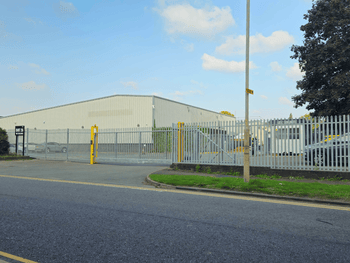
Benefits of Installing a Kitchen Filter Tap at Home?
|
|
Time to read 6 min
Written by: Taps UK
|
Published on
|
Time to read 6 min
In the UK, tap water is classed as safe to drink and undergoes strict treatment before it reaches your home. However, many households still notice issues with taste, smell, and limescale build-up. This is because while chemicals such as chlorine are added to kill bacteria, they can also leave an unpleasant aftertaste, and naturally occurring lime and heavy metals may affect water quality further. These factors often encourage people to look for ways to improve their drinking water.
A kitchen filter tap is one of the most convenient solutions. Unlike water filter jugs that need to be refilled and stored in the fridge, a filter tap delivers clean, fresh-tasting water directly from your sink. It saves time, reduces reliance on plastic bottles, and helps protect your kitchen appliances from scale. With a wide choice of designs available from leading brands such as Perrin and Rowe and Abode, filter taps are becoming a popular upgrade in modern kitchens.
A kitchen filter tap is a mixer tap with a built-in water filter system that provides purified water directly from your sink.
Many models reduce limescale, chlorine, and heavy metals. For hard water areas, you can choose a filter designed to specifically tackle limescale.
Most filters last between 3 and 6 months, depending on water quality and usage. Regular replacement ensures the best performance.
They are cheaper long-term compared to bottled water, as the only ongoing cost is the replacement filter cartridge.
Yes, they come in a variety of styles and finishes, making them suitable for modern and traditional kitchen designs.
A kitchen filter tap blends the roles of a standard mixer and a water filter in one fixture. Here’s how it operates:
A branch of the cold mains feed is diverted to a filter cartridge, usually placed under the sink.
That branch passes through media such as activated carbon, ion exchange resin or membranes to reduce chlorine, heavy metals, taste/odour, and sometimes limescale (depending on the filter).
Filtered water is routed back up into a separate channel in the tap spout or dedicated outlet, so it never mixes with unfiltered hot/cold water. In three-way taps, dual pathways inside the spout keep the flow separate.
The unfiltered hot and cold water continues through the tap’s regular internal plumbing for washing and cooking.
Because filtered water travels through its own path, you get clean drinking water instantly — no jugs, no extra taps.
Why Water Pressure Matters
Water pressure affects how well a filter tap performs:
Filters introduce resistance. Insufficient pressure can lead to weak flow or dribbling when the filtered channel is active.
Most filter taps require a minimum cold water pressure (for example, 0.5 bar or more) to function properly. Some higher-end models cope better with lower pressure.
If your system has low pressure (e.g. gravity-fed homes), a booster pump may be needed to maintain acceptable flow for both regular and filtered channels.
When the flow is too slow, users may avoid using the filter mode — defeating its purpose.
Hard Water & Filter Performance
Hard water (high in calcium, magnesium) matters for filter efficiency:
Scale build-up can clog filters prematurely, reducing flow and lifespan.
Some filters include ion exchange or antiscalant media to soften or inhibit scale.
In regions with very hard water, combining a softener or reverse osmosis (RO) system may help. RO systems push water through a membrane to remove a wide spectrum of impurities and reduce hardness.
But RO tends to remove beneficial minerals too, and waste water in the process, so the choice depends on your local water profile and priorities.
Before choosing a filter tap, check your water hardness using a test kit or your postcode. That helps you select a cartridge capable of handling your level without performance issues.
Filter taps come in various configurations. Here are the main types:
| Tap Type | Description | Channel Design | Typical Handles |
|---|---|---|---|
|
Three-way / tri-flow tap |
One tap supplies hot, cold, and filtered water |
Dual or triple internal channels keep filtered flow separate |
Two or three levers; sometimes segmented handles or a dial for filtered flow. |
|
Single-lever filtered mixer |
All water passes through the filter (hot & cold) |
One path, full filtration |
Standard single lever with filtering mode toggle or diverter |
|
Dedicated filtered spout |
Separate small spout for filtered water next to main mixer |
An isolated channel entirely for filtered water |
Small dedicated lever or button for the filtered outlet |
Handle designs often include:
Push/Select buttons to switch between modes.
Segmented levers, where part of the lever controls filtering.
Indicator lights on the handle or near the tap to warn when cartridges need replacing (e.g. Grohe Blue systems).
The right type depends on your plumbing layout, style preference, and how you want to use the tap.
At Taps UK, you’ll find a strong selection of kitchen filter tap manufacturers, each offering unique styles and features:
Perrin & Rowe — well known for premium 3-way and 4-way taps in traditional and modern finishes.
Caple — offers modern filtered taps like the Dalton Puriti in stainless steel and other finishes.
Abode — provides filter diverter taps and classic designs for mixed kitchens.
Astini has three-way mixers combining filtered water with hot and cold outlets.
Rangemaster — features filtered tap versions across their wider kitchen tap ranges.
Each brand offers variants in lever style (single, dual, triple), diverter mechanisms, and a wide choice of colour finishes to suit different kitchen designs.
Installing a kitchen filter tap is more involved than fitting a standard mixer, as the filter cartridge system must be connected beneath the sink. Each brand has its own fitting requirements, and parts are not interchangeable, so only use cartridges and accessories made for your model. Some brands, such as Brita and Grohe, offer professional installation services, though a qualified plumber can also carry out the work. Correct installation is important for maintaining water pressure and ensuring the filtered outlet performs properly.
To keep your tap working at its best, filter cartridges must be replaced every 3–6 months, depending on your water hardness level and household usage. Failing to replace filters on time will void the warranty and reduce water quality. Premium systems, like Grohe Blue, often include indicators to remind you when a change is needed. Always use genuine replacement cartridges, keep the system accessible for easy servicing, and replace filters immediately if you notice poor flow or changes in taste.
⚠️ Important: Not replacing filter cartridges on time will void the warranty and compromise water quality.
Installing a kitchen filter tap offers more than just convenience—it delivers everyday advantages for your home, health, and budget.
Cleaner, Better-Tasting Water
A filter tap reduces chlorine, heavy metals, and limescale, giving you fresh, pure-tasting water straight from your sink for drinking, cooking, or filling bottles.
Cost Savings
By replacing bottled water with filtered water at home, you cut down on weekly costs. The only ongoing expense is the cartridge replacement, which is far cheaper than buying bottled water.
Eco-Friendly Choice
Switching to a filter tap reduces reliance on plastic bottles, helping lower your household waste and environmental impact.
Protects Appliances
Filtered water limits limescale build-up in kettles, coffee machines, and other kitchen appliances, extending their lifespan and reducing maintenance.
Style & Flexibility
With designs available in chrome, black, brass, copper, and brushed finishes, and options from brands like Grohe, Abode, Astini, Caple, Perrin & Rowe, and Rangemaster, there’s a model to suit every kitchen style.
A kitchen filter tap is more than a style choice—it’s a practical upgrade that improves daily life. From better tasting water to protecting your appliances, it offers benefits that go beyond convenience. With options ranging from traditional three-way taps to sleek modern mixers, there’s a design to suit every kitchen.
Cleaner, fresher water straight from your tap without the need for jugs or bottles.
Cost savings by reducing bottled water purchases and replacing only low-cost cartridges.
Health and taste benefits with reduced chlorine, lime, and impurities.
Eco-friendly choice that cuts down on plastic waste.
Stylish, flexible options available from trusted brands like Perrin and Rowe and Abode.
Taps UK is a prominent online retailer in the United Kingdom, specializing in a wide variety of kitchen and bathroom products. The company boasts a large selection of taps, sinks, and accessories from both well-known industry brands and its own exclusive lines, catering to a broad customer base that includes the general public as well as trade professionals like developers and builders.
Email Us: hello@tapsuk.com
Call Us: 01527 868500
Get all the latests news and offers from our team right to your inbox
Accepted payment methods:
© 2025 TAPS UK . All Rights Reserved.







